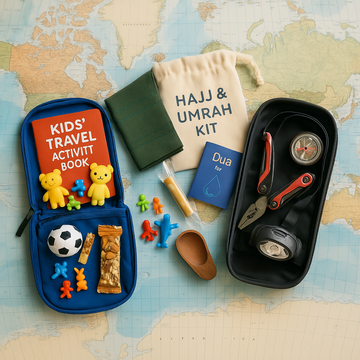As you buckle up for your next flight, ready to soar above the clouds, take a moment to consider the unseen world that accompanies you on your journey. These aren’t your fellow passengers, but rather an array of germs and bacteria that have made a home on the surfaces you’re about to touch. These germs, known to cause various illnesses, pose a potential risk to many travelers.
A study by microbiologists and engineers at Auburn University revealed that disease-causing bacteria can survive on various airplane surfaces for days, even up to a week. The research found that MRSA lasted 168 hours in a cloth seatback pocket, while E. coli O157 lingered for 96 hours on an armrest. This is unsettling news for anyone who’s ever stashed a book or a snack in the seat pocket or rested their arms during a long flight.
In this article, we’ll navigate through the germ-infested territories of an airplane and uncover the steps you can take to shield yourself from these invisible threats.
The Most Germ-Infested Plane Surfaces
While airlines strive to maintain high standards of cleanliness, certain surfaces within the aircraft can harbor an abundance of germs and bacteria. In the following section, we'll explore together some of the surfaces that harbor a plethora of germs on board the aircraft:
1. Tray Tables
While often seen as convenient workstations or dining spots during air travel, these seemingly innocuous surfaces can harbor a wide array of germs. Before unfolding the tray table, it's essential to thoroughly sanitize it to safeguard your personal health and safety. By doing so, you can effectively mitigate the risk of exposure to the multitude of microbes that may have accumulated there.
2. Armrests
Virtually every passenger comes into contact with armrests, yet they are rarely sanitized between flights. These surfaces can harbor harmful bacteria such as E. coli, which may lead to gastrointestinal distress.
3. Seat Pockets
Despite their intended purpose of storing reading materials and safety instructions, seat pockets are often neglected during cleaning routines. They can accumulate bacteria like MRSA, remaining a potential source of contamination for up to a week.
4. Lavatory Handles
It’s widely acknowledged that airplane bathrooms are not the cleanest of places, but the extent of contamination might surprise you. Lavatory handles, which are touched by numerous passengers, can be contaminated with a variety of pathogens, necessitating the use of hand sanitizer after every visit.
5. Airplane Seats:
The seats themselves, particularly in high-density areas like the middle seat, are not exempt from germ exposure. A study published by the CDC indicated that leaving the middle seat vacant could reduce a passenger’s exposure to SARS-CoV- by 23% to 57%. This highlights the potential risk of disease transmission based on seating arrangement and the importance of surface hygiene.
How to avoid germs that cause illness
Sanitize Your Space:
Equip yourself with disinfectant wipes to thoroughly clean surfaces such as tray tables, armrests, and seat belts before use, ensuring they are free from harmful germs and bacteria.
Hand Hygiene:
Prioritize regular handwashing with soap and water or the use of hand sanitizers, particularly after touching common surfaces or using the lavatory. This simple yet effective practice can significantly reduce the risk of germ transmission.
Physical Distancing:
Whenever feasible, select a seat with ample space around it to minimize contact with potentially contaminated surfaces and fellow passengers. Maintaining physical distance onboard can help mitigate the spread of infectious diseases.
Seat Selection:
Consider choosing a window seat whenever possible, as they are less frequently touched by passing passengers and crew compared to aisle or middle seats. This strategic seating choice can further reduce your exposure to germs and enhance your overall comfort during the flight.
Seat Cover:
Bring along a disposable seat cover to provide an additional layer of protection against germs and bacteria on the airplane seat. This extra precaution can offer peace of mind and further safeguard your health during your journey.
So, we recommend using Your Shield seat covers. Designed to stringent international standards, these covers provide both comfort and health. Constructed from materials engineered to repel bacteria and viruses, they offer protection against contaminants, dust mites, and allergens. With innovative designs suitable for all ages and lightweight portability, they're ideal for use on airplane seats.
Finally, while the thought of germs on a plane might be unsettling, awareness and proactive measures can greatly reduce the risk of illness. By understanding the hotspots for germs and taking steps to protect yourself, you can enjoy a healthier travel experience. Remember, a little preparation goes a long way in ensuring a germ-free journey.


